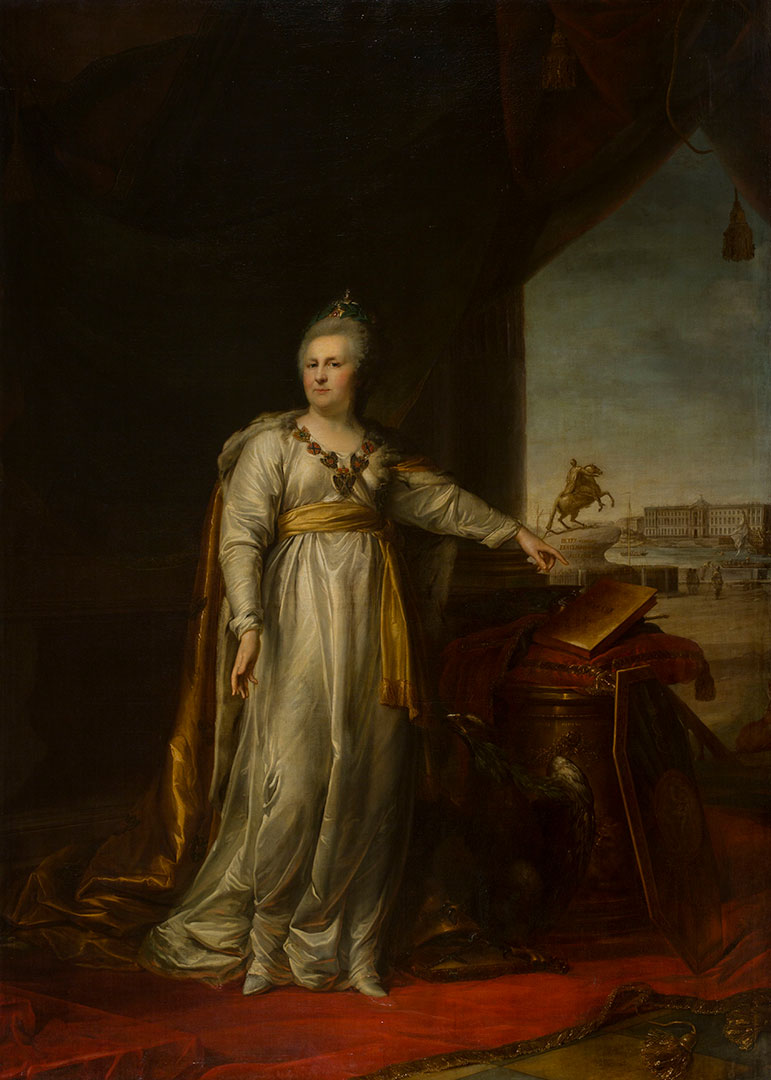The Collaboration between the State Hermitage and the SMP Bank Group Continues
In 2022, the long-standing collaboration between the State Hermitage and the SMP Bank Group is continuing.
Despite the difficulties associated with overcoming the consequences of the coronavirus pandemic, the SMP Bank Group is providing support for the restoration of a painting by Andreas Caspar Hüne from the Hermitage collection – a Portrait of Empress Catherine II.
In 1790, Andreas Caspar Hüne began work on a series of large-format historical paintings linked by the idea of Russia’s military triumph and prosperity under the wise rule of Catherine the Great. The series also included a formal portrait of the Empress. A study of the entire set of paintings and the associated archival documents made it possible to conclude that the pictures were commissioned by one of the Empress’s closest associates – the Illustrious Prince Grigory Potemkin of Taurida and were most probably intended to adorn one of the majestic buildings being constructed on his orders in the recently acquired territories of “New Russia” or the Crimea. The Illustrious Prince died in 1791 and work on the commission was discontinued. Besides the portrait of the Empress, Hüne produced only three monumental history paintings that are presently in different museum collections.
The painting depicting Catherine II passed to Potemkin’s nephew, Count Alexander Samoilov, Procurator General of the Governing Senate, and his descendants. In 1941, it came into the State Hermitage as a work by an unknown artist. A visual inspection of the painting succeeded in discovering the artist’s signature and the date: A. C. HÜNE […] MDCCXCI [1791].
Catherine II is depicted wearing the small crown and the chain of the Order of Saint Andrew the First-Called in front of a curtain, beyond which there is a view of Senate Square. It was on that square in 1782 that, by the Empress’s will, a monument to Peter the Great was set up. Further back again, we see the granite embankment of the River Neva and the building of the Imperial Academy of Arts that was erected on her orders in 1764–88. Lying on a pedestal next to Catherine is a volume of the Instruction that she wrote for the members of the Legislative Commission made up of elected representatives of the various estates. The Empress intended that the Commission, which functioned in 1767–68, would draw up a new law code for the Russian Empire. The details listed turn a formal portrait into a monumental historical painting, recording important changes that occurred during Catherine’s reign.
The plan for the restoration of the painting calls for a series of operations to be carried out in several stages. The first part is the photographic recording of the state of the painting, a physical and chemical examination and the taking of pictures under infrared light and x-rays. Then work will be carried out on the layer of varnish, which will be reduced in thickness and evened out across the entire surface. That will be followed by reinforcement of the structure of the picture and the restoration of the transparency of the layer of old varnish. The final stage will be to coat the painting with fresh varnish and make good the losses in the original paintwork.
The restoration work will be carried out by the artist-restorers Andrei Krupenko and Maxim Lapshin in the Laboratory for the Scientific Restoration of Easel Paintings under the direction of its head, Victor Korobov. The scholarly supervisor of the project is Natalia Bakhareva, senior researcher in the Department of the History of Russian Culture.
The results of the restoration project will be presented in late 2022.
The project is being implemented with the support of the SMP Bank Group.

